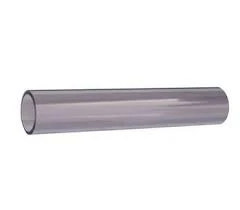Dec . 17, 2024 12:34 Back to list
PVC Pipe Sprinkler Accessories for Efficient Irrigation Systems and Garden Use
Understanding PVC Pipe Sprinkler Fittings A Comprehensive Guide
Irrigation is a vital aspect of agriculture and landscaping, ensuring that plants receive the necessary water to thrive. One of the most efficient and widely used systems for irrigation is the sprinkler system. Among the various materials available for constructing these systems, PVC (polyvinyl chloride) has emerged as a preferred choice due to its durability, flexibility, and cost-effectiveness. This article delves into the significance of PVC pipe sprinkler fittings, their types, benefits, and installation tips.
The Role of PVC Pipe in Irrigation
PVC pipes are made from a synthetic plastic polymer that is resistant to moisture, corrosion, and various chemicals. This makes them an ideal choice for irrigation systems, particularly for sprinkler setups. The lightweight nature of PVC allows for easy handling during installation and maintenance, while its rigid structure ensures long-lasting performance under pressure.
Types of PVC Pipe Sprinkler Fittings
1. Elbows These fittings come in various angles, primarily 90 and 45 degrees, allowing for directional changes in the pipe layout. They are essential for guiding water flow around obstacles or to different sections of a garden.
2. Tees Tees are crucial for branching out the sprinkler system. They enable the connection of multiple pipes, allowing water to flow in several directions simultaneously, which is particularly useful for larger gardens or agricultural fields.
3. Adaptors Adaptors are fittings that connect pipes of different diameters or materials. This is important for integrating PVC pipes with other plumbing components, such as hose bibs or garden hoses.
4. Caps and Plugs These fittings are used to seal the ends of PVC pipes. Caps are used for fitting over the pipe ends, while plugs are inserted into the pipe ends, preventing water from escaping.
5. Valves Valves control the flow of water within the sprinkler system. Using valves allows for efficient water management, ensuring that specific areas can be watered independently.
6. Couplings Couplings connect two pieces of pipe together, facilitating the expansion of the sprinkler system as needed. They can be used for both straight and angled connections.
Advantages of PVC Pipe Sprinkler Fittings
1. Durability PVC fittings are robust and resistant to degradation, ensuring they can withstand the rigors of outdoor environments, including exposure to sunlight, moisture, and temperature fluctuations.
pvc pipe sprinkler fittings

2. Cost-Effectiveness Compared to metal or other types of fittings, PVC is relatively inexpensive. This makes it an attractive option for both DIY gardeners and large scale agricultural operations.
3. Ease of Installation PVC fittings can be easily connected with solvent cement, requiring minimal tools and skills. This accessibility allows for quick setups and repairs, minimizing downtime in irrigation systems.
4. Corrosion Resistance Unlike metal fittings that can rust and degrade over time, PVC fittings maintain their strength and integrity, providing a reliable long-term solution for irrigation.
5. Customizability The variety of PVC fittings available allows for customization of sprinkler systems to meet the specific needs of different landscapes, ensuring optimized water distribution.
Installation Tips for PVC Pipe Sprinkler Fittings
1. Planning Before installation, it’s crucial to plan the layout of the sprinkler system. Consider factors such as the size of the area, the plant types, and the water pressure available.
2. Measuring Accurate measurements are essential for cutting PVC pipes to the correct lengths. Precision ensures a proper fit between the fittings and helps prevent leaks.
3. Use of Primer and Cement When connecting fittings, always use PVC primer before applying solvent cement. This step ensures a stronger bond and helps prevent future leaks.
4. Testing the System Once installed, test the sprinkler system to check for leaks and ensure even water distribution across all areas.
5. Regular Maintenance Regular inspections of the system can catch any potential issues early, ensuring reliable and efficient operation.
Conclusion
PVC pipe sprinkler fittings are an integral part of modern irrigation systems, providing a reliable, efficient, and economical way to manage water distribution. By understanding the types of fittings available, their advantages, and installation tips, both homeowners and agricultural professionals can create effective irrigation solutions that meet their specific needs. The shift towards durable and flexible materials like PVC not only enhances the functionality of sprinkler systems but also promotes sustainable water use practices essential for today's environmental challenges.
-
Durable Glossy PVC Rigid Sheet | Premium High-Shine Panels
NewsAug.26,2025
-
Durable PP Rigid Sheet: Lightweight, Chemical Resistant Solutions
NewsAug.21,2025
-
PVC Grey Sheet for Extraction: Chemical Resistant & Durable
NewsAug.19,2025
-
Durable PVC Pipe Fittings for Plumbing & Irrigation Needs
NewsAug.18,2025
-
HDPE Steel Belt Reinforced Spiral Corrugated Pipe | High Strength
NewsAug.17,2025
-
HDPE Pipe Fittings: Durable, Leak-Proof Solutions
NewsAug.16,2025

